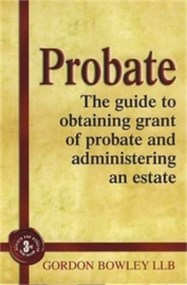How to Fill Out Probate Forms

- The majority of applications for probate that follow someone’s death can be dealt with inexpensively by any reasonably intelligent person with time available and a little guidance. This easy-to-follow article clearly explains what forms you need to apply for probate and where to find them.
-
Where do I start?
When obtaining a grant of representation to the estate you need to pick up two forms. One includes details of the deceased and the applicants to the probate registry, the other is form of account with details of the value of the estate to the Capital Taxes Office.
Where do I get the forms?
An application pack, including all forms and an advice booklet, can be found by telephoning the probate and inheritance tax helpline or downloaded from the internet. Alternatively, you can also write to the Probate Department.
What forms do I need?
A grant of probation, a grant of letters of administration and a grant of letters of administration with the will are all identical, but there are different types of inheritance tax accounts and the forms are as follows:
i) If the person who has died lived abroad and his assets in the country were few, you need form IHT207 or IHT400. Form IHT207 will tell you which one is best for you.
ii) If the person who has died was living in the UK and had sufficient funds you’d need form ITH205 or form IHT400 depending on certain clauses.
I have filled in the forms, now what?
Once the necessary forms have been filled in and signed, they should be sent to the probate registry (unless you have filled in form IHT400 as that needs to be sent to the Capital Tax Offices) along with the below:
i) the coroners letter if there’s been an inquest
ii) the originals of any will and supplements
iii) the fee for the application
I have to pay inheritance tax, what do I do?
Before paying inheritance tax, an inheritance tax reference must be acquired by filling in form IHT422 and sending in to the Inheritance Tax Office in Nottingham.
Am I missing anything?
Make copies of all the documents you send to the probate registry or the inheritance tax authorities for your records. Remember never to remove any fastenings, attach anything to a will or add any additional supplements – and that includes adding pages with a paperclip.
For more steps and advice on probate read Probate: The guide to obtaining grant of probate and administering an estate (Robinson) by Gordon Bowley LLB.
Probate
by Gordon Bowley
An authoritative, accessible guide to administering an estate
The majority of applications for probate that follow someone's death can be dealt with inexpensively by any reasonably intelligent person with time available and a little guidance. This easy-to-follow book clearly explains all the information you need to administer the deceased's estate, from dealing with the urgent practical matters to preparing and submitting the relevant forms, paying inheritance tax, and distributing the estate. You'll find specimen forms and letters and a list of useful addresses that will enable you to deal with it all yourself.
Contents:
Preface;
1. What is probate, when is it necessary and what is involved?
2. Who can and should wind up the estate;
3. Getting started;
4. Next steps;
5. From preparing and submitting the forms to distributing the estate;
6. Distributing the estate;
Appendices:
1. Specimen forms and letters;
2. Useful addresses;
3. Glossary;
Index.








